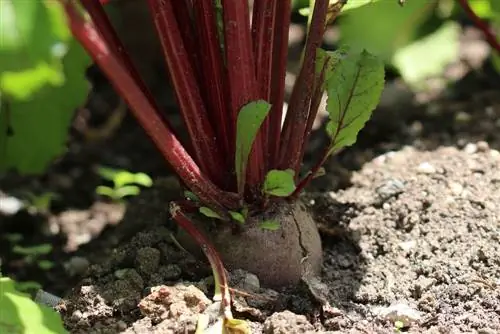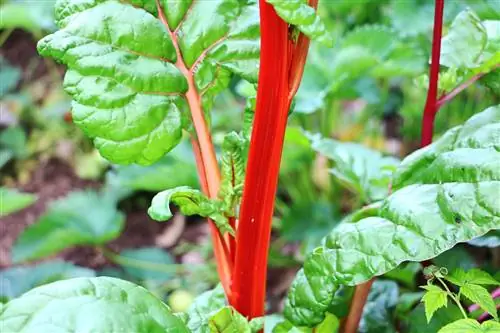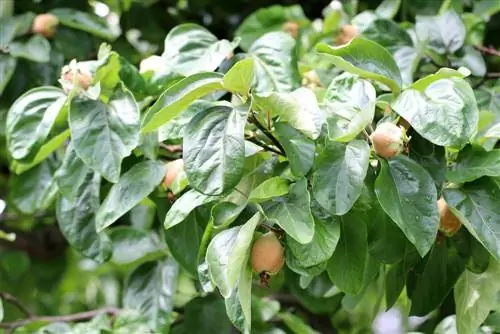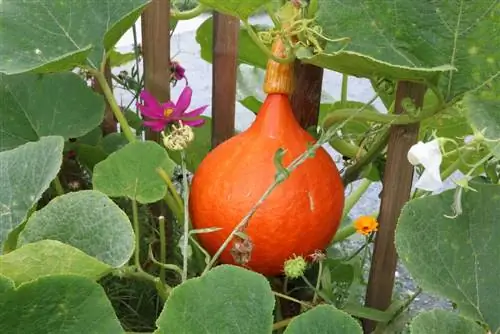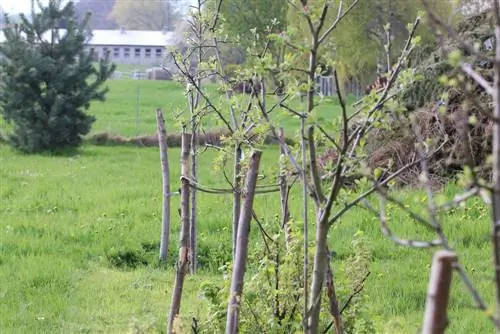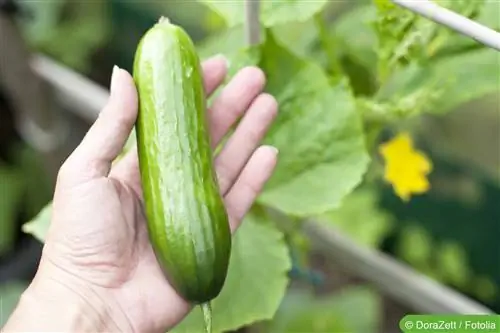- Author admin [email protected].
- Public 2023-12-17 03:39.
- Last modified 2025-06-01 06:48.
With its juicy, red tubers, beetroot promises mild, aromatic vitamin enjoyment in autumn and winter. To ensure that the classic winter vegetables taste just as good fresh from the bed as they do after a longer period of storage, it is important to harvest them professionally. Each purpose requires a specific state of ripeness, which results in the best harvest time. To ensure that your home-grown beetroot reaches the table in premium quality, important criteria must be taken into account when harvesting. This guide explains when and how to harvest beets correctly.
Main harvest time is in autumn
When the days are noticeably shorter at the end of October/beginning of November and the first frosty nights arrive, the window of opportunity for harvest opens. The longer beetroot stays in the ground, the longer the tubers last. However, looking at the calendar and thermometer is not enough to determine the ideal harvest date. The plant itself signals that it is now mature with the following characteristics:
- 12 to 16 weeks have passed since sowing
- The leaves turn yellow and are covered in spots
In order to obtain beetroot with the best taste, the tubers have no or only a few white rings at the best time of harvest. This criterion applies especially to varieties with round tubers, as there are often no white stripes at all on elongated beets.
Harvest baby beets four weeks earlier
Beetroots in mini format are very popular with young and old for mild, aromatic fresh consumption. While the mighty beets still have to ripen in the ground for at least four weeks, baby beets can be harvested at the end of September/beginning of October. You can grow the small, red tubers from almost any variety.
Sown in June/July, they are already mature after a cultivation period of 10 to 12 weeks. With a size of 4 to 5 cm, the tiny pieces are processed whole or eaten fresh from the bed. The only disadvantage of growing baby beets is that they cannot be stored. The small, red beets make up for this shortcoming with an extra tender consistency.
Tip:
Beets should not be grown in the same location in direct succession. Once you have harvested the bed, please take a break from cultivation of at least 3 years before planting beets in the ground again.
Harvesting instructions
- how to do it right -
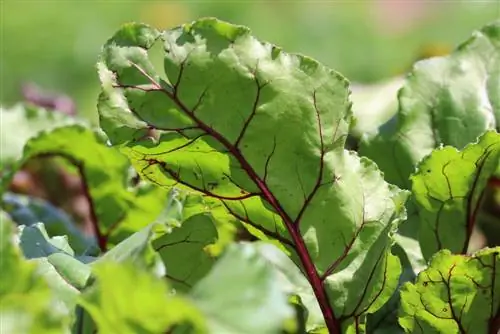
Since beetroot tends to store large amounts of nitrate, this property is taken into account during cultivation with a low-nitrogen nutrient supply. By harvesting in stages, you make a further, valuable contribution to reducing the nitrate content in each individual beetroot. This is how it works:
- On the early morning of the harvest date, lift the tubers only slightly with the digging fork
- Make sure that all the roots are not torn off and that the shell is not damaged
- Only lift all the beets carefully out of the ground in the afternoon
- Twist or cut off the leaves
- Only leave the heart leaves standing to protect the pulp from dryness
- Don't cut off the main root of stock beets
You can avoid the risk of damaging the skin and the subsequent bleeding of a beetroot with an alternative harvesting technique. Hold the withered leaves with your hand and pull the beets out of the ground. Again, remove all foliage except for the heart leaves and leave the large root at the bottom for storage.
Tip:
You can stimulate the growth of beetroot with nettle and comfrey manure. As soon as the tubers form, fertilize every 2 to 3 weeks with the rich plant manure, which is previously diluted with water in a ratio of 1:10.
Tips for a long shelf life
The best harvest time and the harvesting technique recommended here have a beneficial effect on the shelf life of red beets. If the juicy, aromatic winter vegetables are given adequate storage space, the tubers will enrich the local menu well into spring. How to store beetroot correctly:
- A dark, cool room with high humidity is ideal
- Store beets in a box with sand or peat
- Wrap in damp cloths in the fridge and place in the vegetable compartment
Do you still have room in the freezer? Then peel the tubers, cut the pulp into pieces to cook for 25 minutes. Once cooled, freeze the beets so they will last for up to 12 months.
Conclusion
Without beetroot, the winter menu would be colorless and would have fewer vitamins to offer. In order for the juicy, aromatic winter vegetables to bring the desired enjoyment to your plate, it is important to harvest them professionally at the best time. Since the red treasures develop underground, various criteria must be taken into account for the best harvest time. 3 to 4 months should have passed since the summer sowing and the first frost should have been announced. Withered and yellowed leaves visually signal that the beets are now ripe. You can either dig up the vitamin-rich tubers with a digging fork or simply pull them out of the ground by the leaves. If you don't want to wait until the main harvest at the end of October/beginning of November, you can grow baby beets so that you can eat them fresh 4 weeks beforehand.

